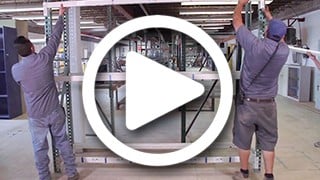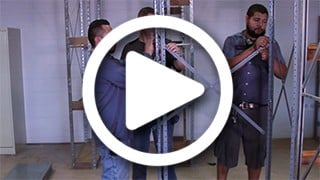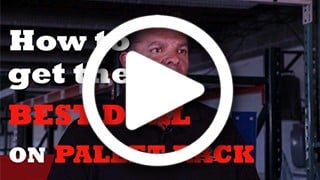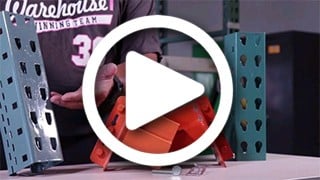What Is Cantilever Racking - A Guide
Cantilever Racking Questions Answered
When beginning a warehouse organization project, you must first establish which style of rack best suits your product and warehousing needs. Most businesses use some type of pallet racking, but pallet racks aren’t always the right solution. If you store piping, tubing, carpeting, lumber, or similar items that are difficult to transport and store via pallet, then cantilever racking is the best solution to organize your warehouse.
What is Cantilever Rack?
 Cantilever Rack allows for the storage and organization of items not easily stored on pallets. Warehouses use cantilever uprights that support cantilever arms. This allows for longer and heavier items to be stored horizontally across multiple arms. This is the key difference between cantilever racking and pallet racking. Pallet racks have vertical uprights that restrict the length of stored items. This doesn’t mean a cantilever racks can’t store traditional pallets.
Cantilever Rack allows for the storage and organization of items not easily stored on pallets. Warehouses use cantilever uprights that support cantilever arms. This allows for longer and heavier items to be stored horizontally across multiple arms. This is the key difference between cantilever racking and pallet racking. Pallet racks have vertical uprights that restrict the length of stored items. This doesn’t mean a cantilever racks can’t store traditional pallets.
Depending on the needs of your warehouse, you can configure a cantilever racking system to store both traditional pallets and oversized items. However, you can only store pallets one-deep per row. If your warehouse stores nothing but traditional pallets, you can still use cantilever rack but it won’t utilize your space as efficiently.
How do Cantilever Racks Work?
 A cantilever rack consists of four main components: the base, uprights, arms and supports. The base is heavy and often made of steel. It gives strong support and extends out from the bottom of the rack to counter-balance the heavy weight of the stored items.
A cantilever rack consists of four main components: the base, uprights, arms and supports. The base is heavy and often made of steel. It gives strong support and extends out from the bottom of the rack to counter-balance the heavy weight of the stored items.
The uprights are extremely strong vertical posts that support the arms. The arms themselves are the “shelves” that extend from the uprights. They store your inventory. Supports connect the uprights to give the racks extra strength.
Are Cantilever Racks Right for My Warehouse?
The major benefits of cantilever racking depend upon your storage needs. If your business only stores small products that are easily stacked on pallets, cantilever racks may not be for you. Pallet racks offer more options for that type of storage and allow for more efficient usage of available space.
Does your warehouse store larger, bulkier items or currently use any floor stacking for items that don’t fit on pallets? Cantilever racks can give you the flexibility you need to store all of your goods. Cantilever racks are easy to install, relatively easy to reconfigure, and easy to arrange in ways pallet racks can’t.
What Forklifts and Planning Do I Need for Cantilever Racks?
There are a few considerations you must keep in mind when considering a cantilever racking system. First, you must have the right forklifts. Because the arms of a cantilever are only supported by one connection to the uprights, they are limited in their possible length. If the arms are too long, they lose their strength. This means your warehouse will need more rows of cantilever racks to store your inventory, which also means narrower rows.
Front-driving forklifts will require rows wide enough to move the long items you are storing. This results in a lot of unused space for the forklifts to maneuver. Before considering a cantilever racking solution, you must first consider side loader or multi-directional forklifts, which usually come at a premium. Finally, you’ll want to work with a warehouse efficiency partner to plan and design your warehouse solution.
The experts here at Warehouse1 have the experience to guide you in your cantilever rack project from design and planning to installation. Whether you need an entirely new warehouse organization solution or are just looking to update your current plan, give us a call at 888-558-1830 today!



